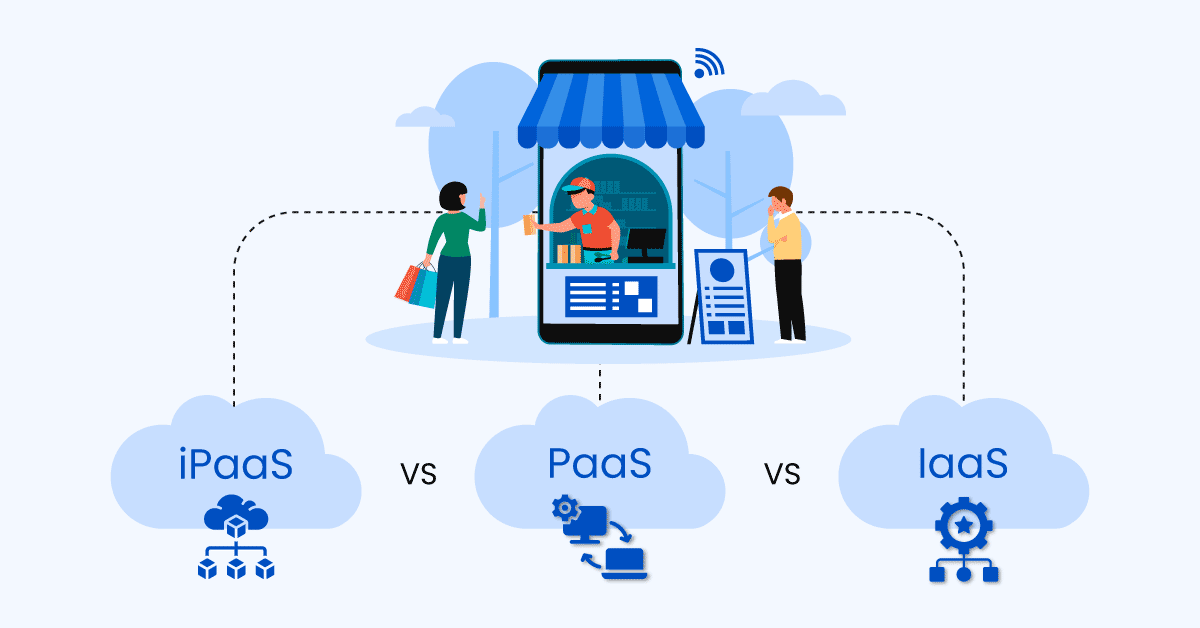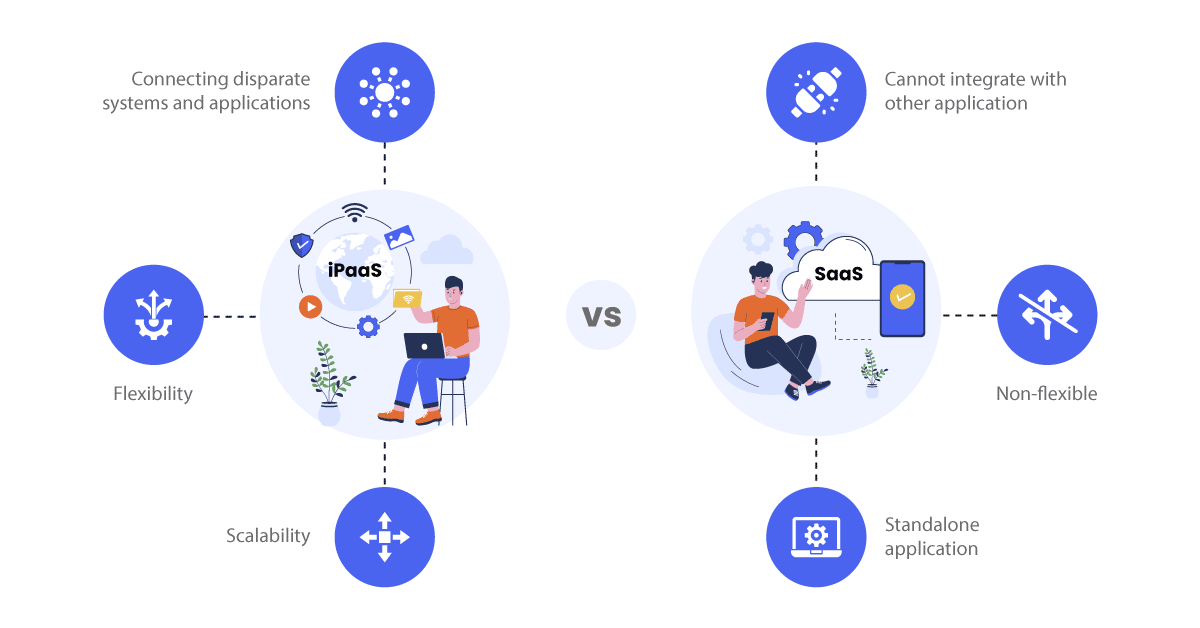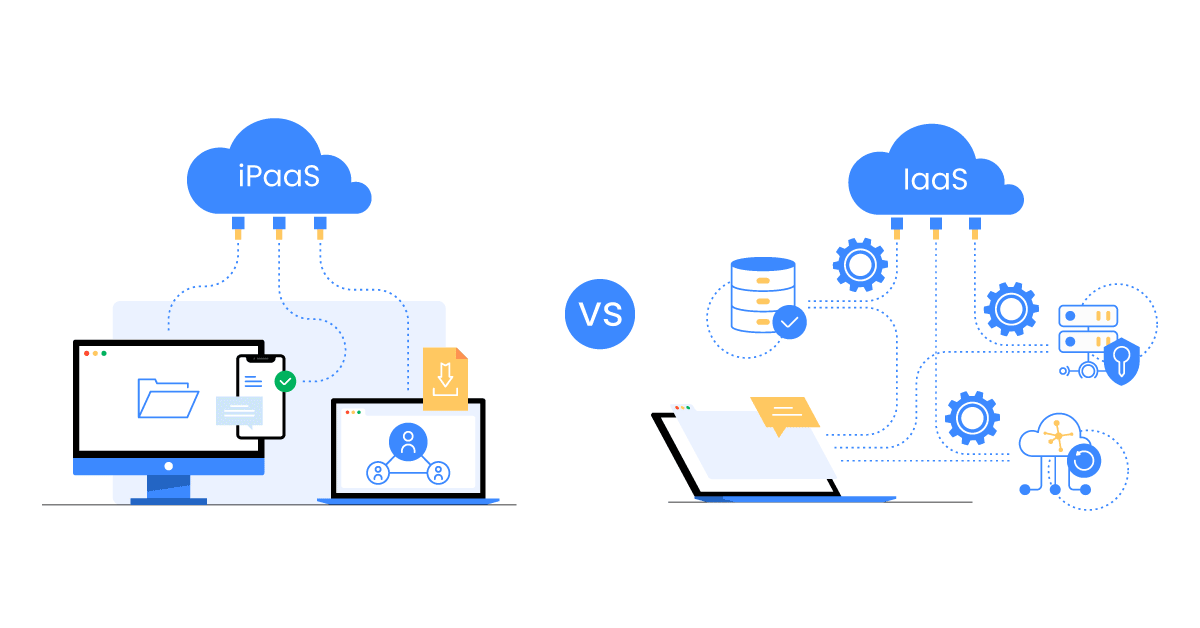The outbreak of COVID-19 has had a significant impact on the retail industry. As a result of the pandemic and subsequent lockdowns, consumer behavior has shifted towards online shopping with curbside pickup or delivery. This change in consumer preference has been a common topic in the retail industry since the start of the pandemic, with many articles focusing on how retailers can adapt to meet these new demands.
Aonflow iPaaS – Free for First 3 Months!
Build and run up to 1,500 transactions monthly with no cost. No payment info needed!
BigCommerce reports that businesses that had already established an omnichannel presence before the pandemic experienced a surge in sales. However, those that had not yet implemented such strategies had to quickly adopt some form of omnichannel service to stay competitive in the market. Major PaaS and IaaS providers, including AWS, Azure, and GCP, stepped in to offer rapid onboarding and services to help these businesses catch up with their omnichannel competitors.
While PaaS and IaaS provide solutions for platform and infrastructure challenges, the issue for retailers lies in how to connect their existing systems with these new omnichannel digital solutions. This blog aims to address this challenge and explore how iPaaS can serve as a solution.
First, let’s understand what does SaaS/IaaS provide?
PaaS/IaaS provides a platform for IT teams to develop the necessary connections and integrations themselves. However, without additional supportive features, this approach often results in coded point-to-point integration. As a business’s connections and integrations grow, this approach can become unwieldy, and expensive, and hinder the agility required to stay competitive in the market.
PaaS:
Provides a platform for building and deploying custom applications
Eliminates the need to manage the underlying infrastructure
Offers tools and frameworks for developing, testing, and deploying applications
Allows developers to focus on application development rather than infrastructure management
Provides scalability, flexibility, and cost-effectiveness
IaaS:
Provides virtualized computing resources, such as servers, storage, and networking
Gives businesses greater control and flexibility over their computing resources
Enables businesses to build and manage their applications and services
Allows businesses to scale resources up or down as needed
Provides cost savings by eliminating the need for in-house hardware and infrastructure maintenance.
How is iPaaS different from PaaS?
iPaaS and PaaS are both cloud-based solutions that offer different benefits and functionalities. While they may seem similar at first glance, there are significant differences between the two.
The main difference between iPaaS and PaaS is their purpose. iPaaS is primarily designed for integration, while PaaS is designed for application development. iPaaS provides a middleware that connects different applications and systems to ensure seamless communication and data sharing. On the other hand, PaaS provides a platform for developers to build, test, and deploy custom applications.
Another difference between iPaaS and PaaS is their level of abstraction. iPaaS operates at a higher level of abstraction than PaaS, which means it is more focused on connecting existing systems and applications. iPaaS typically provides pre-built connectors and integrations that allow businesses to connect their systems quickly and easily. PaaS, on the other hand, provides a framework and tools for developers to build custom applications from scratch. PaaS typically provides a range of development tools, databases, and middleware, allowing developers to build applications with greater flexibility and control.
In terms of scalability, both iPaaS and PaaS offer flexible scaling options. iPaaS typically offers horizontal scaling, where additional resources can be added to handle increased workloads. PaaS offers horizontal and vertical scaling, where additional resources can be added to handle increased workloads or improve performance.
iPaaS and PaaS also differ in their pricing models. iPaaS solutions typically charge based on the number of integrations or data volumes, while PaaS solutions charge based on the number of computing resources used.
Aonflow is the leading integration platform.
You can kick-start by integrating your first-ever workflow in just a matter of minutes.
How is iPaaS different from IaaS?
iPaaS and IaaS are two different cloud-based solutions that offer distinct benefits and functionalities. While both solutions are designed to help businesses move their workloads to the cloud, they serve different purposes.
The main difference between iPaaS and IaaS is the level of abstraction they operate at. iPaaS provides a middleware layer that enables businesses to integrate and connect disparate systems and applications in the cloud. This integration layer is built on top of existing infrastructure, such as IaaS. IaaS, on the other hand, provides virtualized computing resources such as servers, storage, and networking that can be used to build and manage custom applications.
Another key difference between iPaaS and IaaS is the level of control that each solution provides. With iPaaS, businesses are typically limited to the pre-built connectors and integrations that are provided by the vendor. While iPaaS provides a great deal of convenience and ease of use, it can be limiting for businesses that require greater customization and control. With IaaS, businesses have full control over their virtualized infrastructure and can configure it to meet their specific needs.
In terms of scalability, iPaaS, and IaaS also differ in their approach. iPaaS solutions typically offer horizontal scaling, where additional resources can be added to handle increased workloads. This scaling is typically automatic and handled by the vendor. With IaaS, businesses have greater flexibility in terms of scaling, as they can add and remove virtualized resources as needed to handle changes in demand.
iPaaS and IaaS also differ in their pricing models. iPaaS solutions typically charge based on the number of integrations or data volumes, while IaaS solutions charge based on the number of computing resources used.
How does iPaaS help retailers vs. SaaS?
iPaaS and SaaS offer different benefits to retailers. While SaaS solutions are designed to provide businesses with access to software applications over the Internet, iPaaS solutions are focused on integration and enabling communication between different systems and applications.
One of the key ways that iPaaS can help retailers is by providing a middleware layer that connects disparate systems and applications. Retailers often use multiple systems and applications to manage their operations, such as point of sale systems, inventory management systems, and customer relationship management (CRM) tools. iPaaS enables these systems to communicate with each other seamlessly, ensuring that data is transferred accurately and efficiently.
In contrast, SaaS solutions are typically standalone applications that are designed to address a specific business need. For example, a retailer may use a SaaS solution for inventory management or email marketing. While these solutions can help address specific business needs, they may not be able to integrate with other systems and applications that the retailer is using.
Another way that iPaaS can help retailers is by providing greater flexibility and scalability than SaaS solutions. iPaaS solutions are designed to be highly modular, which means that businesses can select and use only the features that they need. This can help retailers to avoid paying for features that they don’t need and customize their solutions to meet their specific needs. iPaaS solutions are also designed to be highly scalable, which means that retailers can add and remove integrations and features as needed to accommodate changes in their business operations.
In contrast, SaaS solutions are typically designed to be all-in-one solutions that offer a range of features for a specific business need. While these solutions can help address specific business needs, they may not be as flexible or customizable as iPaaS solutions. Additionally, retailers may be limited in their ability to scale the solution as their business grows or their needs change.
In summary, iPaaS and SaaS solutions offer different benefits to retailers. iPaaS solutions are focused on integration and enabling communication between different systems and applications, providing greater flexibility and scalability than SaaS solutions. SaaS solutions, on the other hand, are typically standalone applications that are designed to address a specific business need. While both solutions can be helpful for retailers, the decision of which solution to use will ultimately depend on the retailer’s specific needs and resources.
How does iPaaS help retailers vs. IaaS?
iPaaS and IaaS offer distinct benefits to retailers. While IaaS provides virtualized computing resources such as servers, storage, and networking, iPaaS focuses on integrating and enabling communication between different systems and applications.
iPaaS can assist retailers significantly by acting as a middleware layer that links diverse systems and applications. Retailers usually employ various systems and applications to run their operations. iPaaS facilitates the smooth communication between these systems, ensuring the efficient transfer of data.
In contrast, IaaS provides virtualized computing resources that can be used to build and manage custom applications. While IaaS can be used to build custom integrations and connect systems, this process can be complex and time-consuming. iPaaS solutions, on the other hand, are specifically designed to simplify the integration process and provide pre-built connectors and integrations.
Another way that iPaaS can help retailers is by providing greater flexibility and scalability than IaaS solutions. iPaaS solutions are designed to be highly modular, which means that businesses can select and use only the features that they need. This can help retailers to avoid paying for features that they don’t need and customize their solutions to meet their specific needs. iPaaS solutions are also designed to be highly scalable, which means that retailers can add and remove integrations and features as needed to accommodate changes in their business operations.
In contrast, IaaS solutions can be more complex and difficult to scale. While IaaS provides virtualized resources that can be used to build custom applications, businesses are responsible for managing and maintaining the infrastructure themselves. This can require a significant investment in time and resources, especially as the business grows.
What’s best for Retailers: iPaaS vs. SaaS or iPaaS vs. IaaS?
Choosing the best solution for retailers depends on their specific needs and resources. iPaaS, SaaS, and IaaS all offer different benefits and can be used in different ways depending on the needs of the retailer.
If a retailer needs to integrate multiple systems and applications, iPaaS can be a great solution. iPaaS enables seamless communication between disparate systems and can provide greater flexibility and scalability than SaaS and IaaS solutions.
On the other hand, if a retailer needs a specific application to address a particular business need, a SaaS solution may be the best option. SaaS solutions are typically designed to be all-in-one solutions that offer a range of features for a specific business need. This can be a great option for retailers that don’t need to integrate with other systems or require a lot of customization.
Finally, if a retailer needs to build and manage custom applications, IaaS can be a great solution. IaaS provides virtualized computing resources that can be used to build and manage custom applications. While this can require a significant investment in time and resources, it can be a good option for retailers that need a high degree of customization and control over their applications.
Final Thoughts
The best solution for retailers will depend on their specific needs and resources. iPaaS can be a great solution for integrating multiple systems and applications, while SaaS can be a good option for addressing a specific business need. IaaS can be a good option for retailers that need to build and manage custom applications. Retailers should carefully consider their options and select the solution that best meets their needs.
Aonflow iPaaS – Free for First 3 Months!
Build and run up to 1,500 transactions monthly with no cost. No payment info needed!


